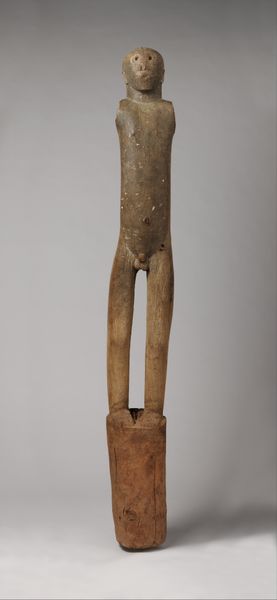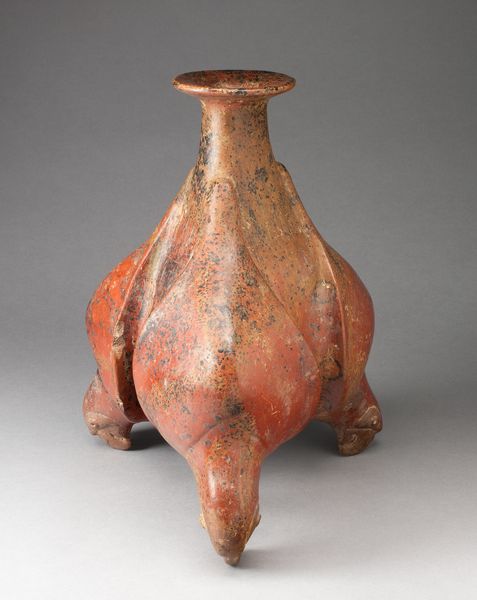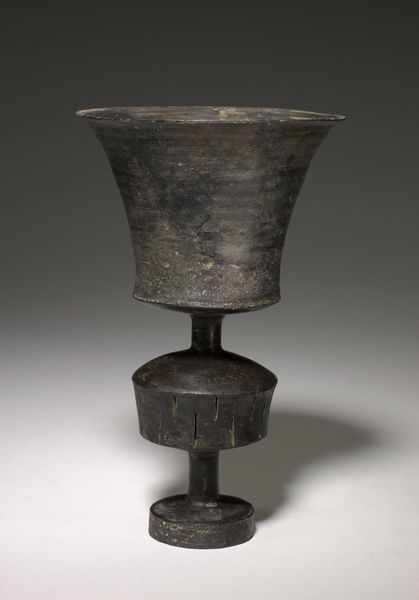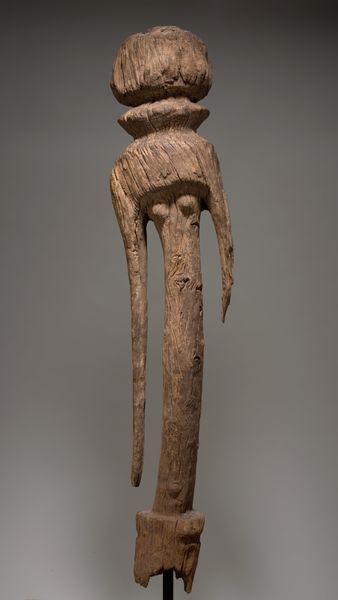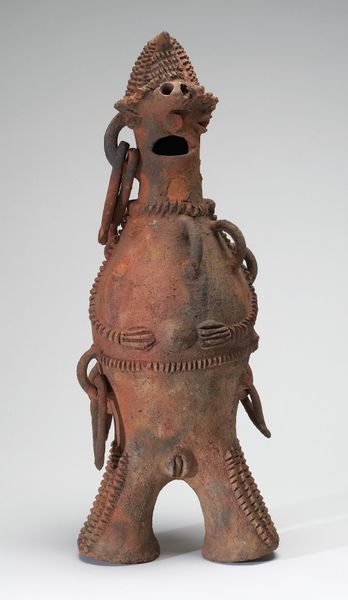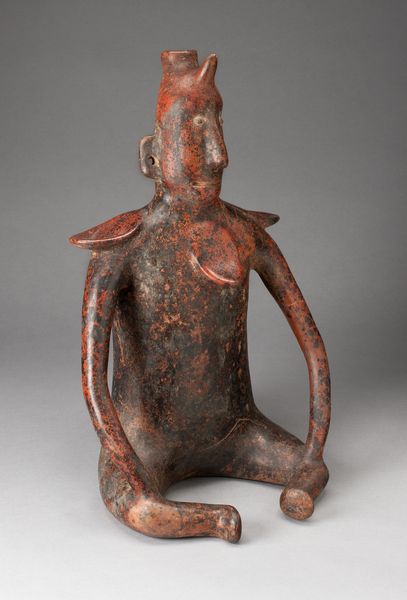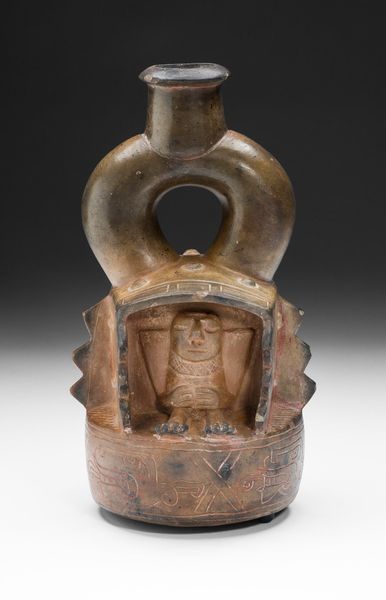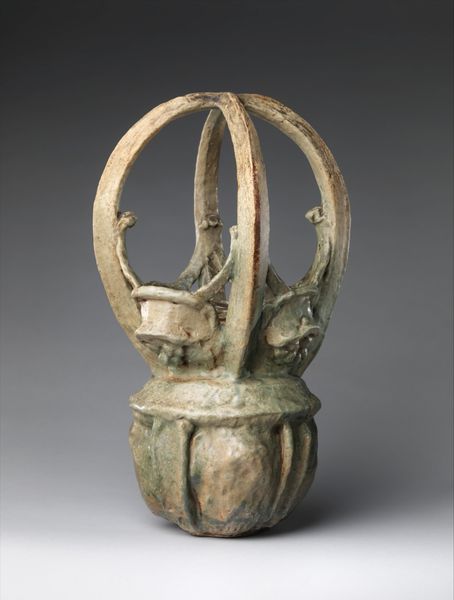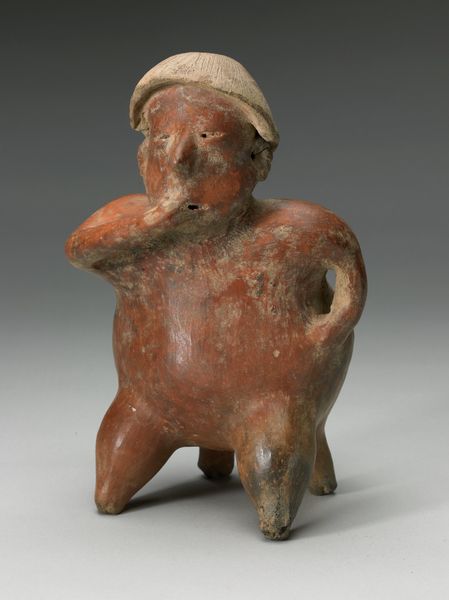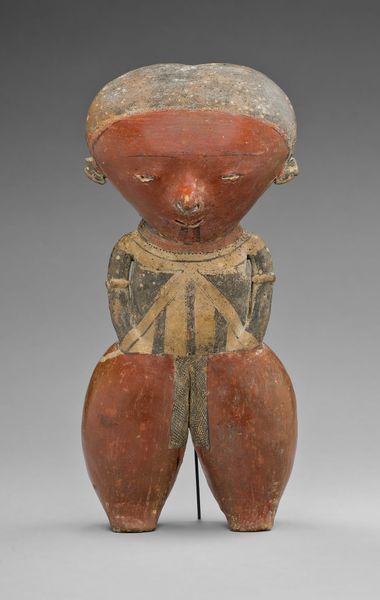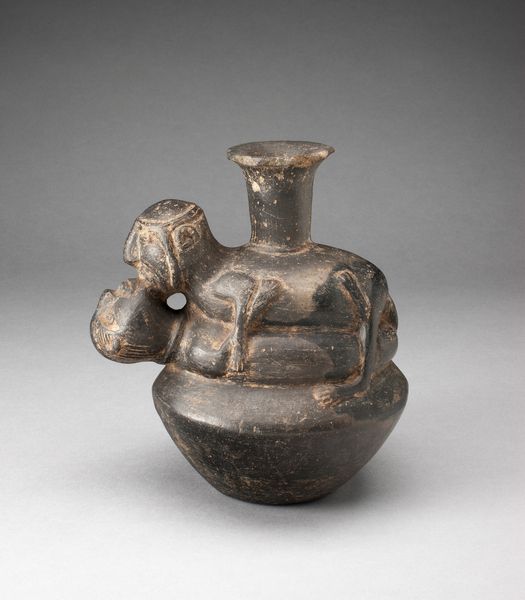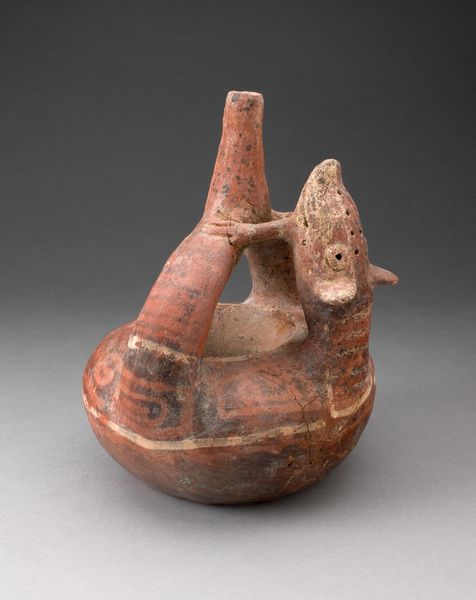
ceramic, sculpture
#
african-art
#
ceramic
#
figuration
#
form
#
vessel
#
geometric
#
ancient-mediterranean
#
sculpture
Dimensions: 17 x 8 1/2 x 9 in. (43.18 x 21.59 x 22.86 cm)
Copyright: Public Domain
Editor: This striking ceramic sculpture, known as "Vessel," dates back to around 500 AD. It's currently housed here at the Minneapolis Institute of Art. It’s strangely compelling, almost like a miniature, ancient table or altar. What strikes you about this piece? Curator: What’s compelling here is how this object transcends a simple designation like ‘vessel.’ Think about the labor involved in its creation, from sourcing the clay to firing it. How did the makers’ hands shape this piece, and what social roles did those potters hold? Was this a widely available form, or crafted for specific rituals and consumers? Editor: I hadn’t considered that aspect, focusing more on the aesthetic elements like the animal figures. What about the form itself – the three legs, the geometric designs? Do those suggest a functional purpose? Curator: Absolutely, but we shouldn’t separate form from its material existence and means of production. The form directly relates to the intended use and how the makers negotiated the inherent properties of clay to build such an unusual object. Think of how each leg was formed, the challenge of joining them to the central body. This reflects choices made within the context of available resources and techniques. Are there similar ceramics produced using the same production workflows or is it unique, pointing to specialized labor? Editor: So you’re saying that to understand the “vessel”, we must see it in the full scope of materials and creation process… It’s more than just its looks. Curator: Exactly. By scrutinizing its materiality and the traces of labor embedded in it, we gain a much richer insight into the lives and society that produced it. What kind of tools, what social position that person occupied, all influence that material output. Editor: I'll definitely be considering these aspects moving forward. I see now how a focus on materials transforms our understanding. Thanks! Curator: Glad to share a different lens to analyze and contextualize. I also learned from considering the impact the “animal figures” have in shifting its perception.
Comments
No comments
Be the first to comment and join the conversation on the ultimate creative platform.
